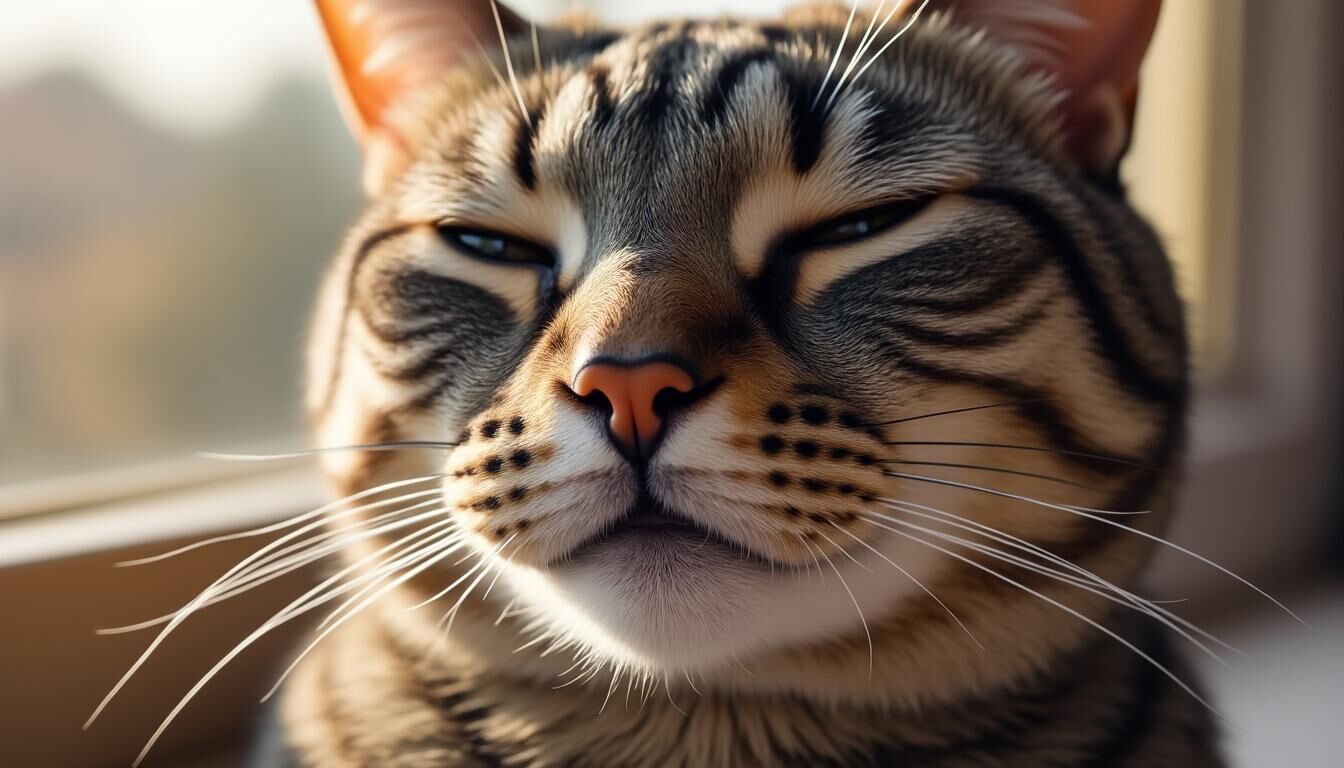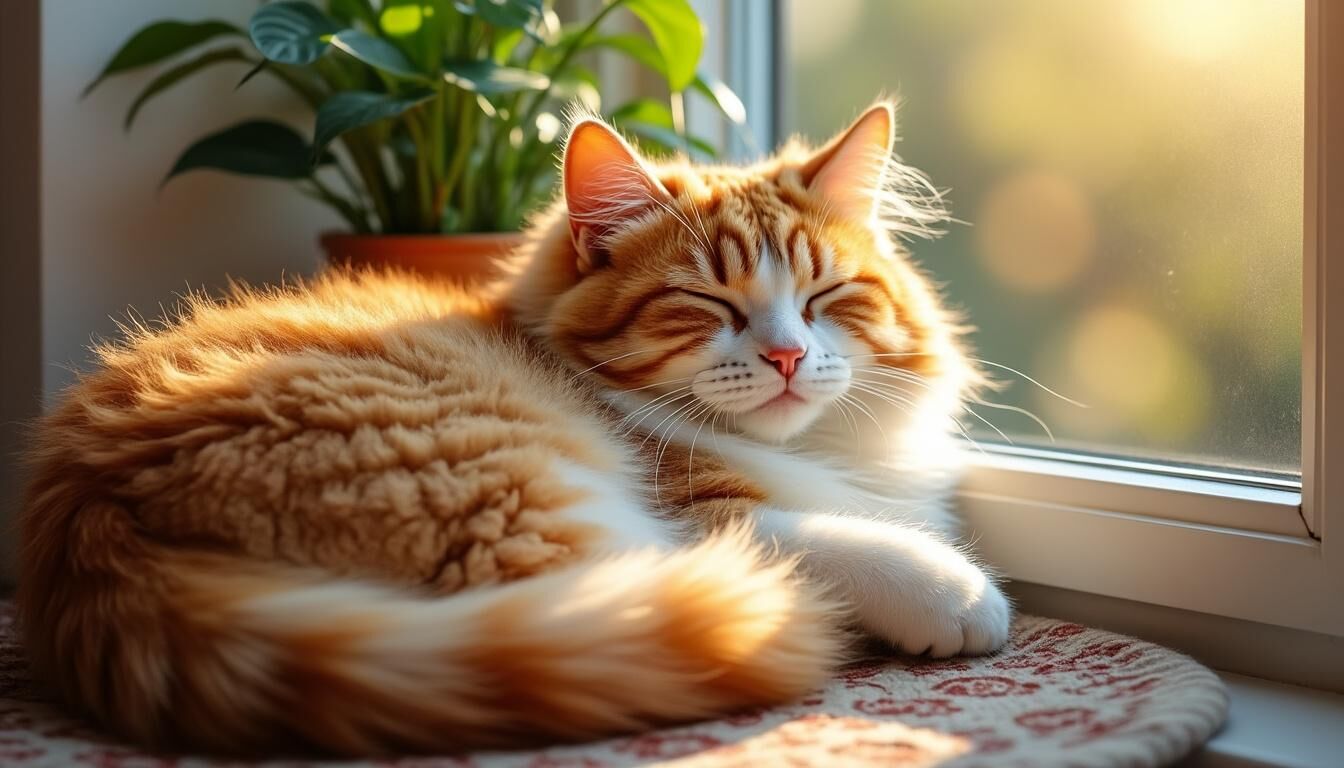Why do cats purr? This seemingly simple question opens a fascinating window into feline biology and behavior, revealing a complex language of vibrations that conveys much more than mere happiness. Cats purr through a unique vocal mechanism involving rapid muscle contractions in their larynx and diaphragm, creating continuous vibrations during both inhalation and exhalation. Recent scientific insights have shed light on how these sounds are generated, involving coordinated actions of the vocal cords, glottis, and neural oscillators in the brain.
Yet, the purr is far from a one-dimensional signal; it serves multiple functions — communication, self-soothing, healing, and even solicitation of human attention. Strikingly, this soft hum can indicate anything from pure contentment curled up in a sunny window to anxiety during a stressful visit to the veterinarian. Understanding the nuances of purring enriches the bond between cats and their owners, inviting deeper empathy and awareness of feline needs and emotions.
Decoding Why Cats Purr: Science, Communication, and Surprising Benefits
What Is Cat Purring? The Unique Science Behind the Feline Vibration
Cat purring is a vocalization distinct from meowing or hissing, characterized by a continuous buzzing or vibrating sound. This purr results from the rapid contraction of laryngeal muscles — around 25 to 150 times per second — causing the vocal cords to twitch and create sound waves. What makes it remarkable is that this vibration occurs during both inhalation and exhalation, producing a steady tone that cats can sustain for long periods.
Scientific studies have identified a role for the brain’s neural oscillators, specialized clusters of neurons that coordinate the timing of muscle contractions. Meanwhile, the glottis, a part of the cat’s vocal apparatus, opens and closes rapidly in sync with these signals, producing the characteristic purring noise. This mechanism allows cats to purr without interrupting breathing, a feature unique among animals.
While the exact physiology varies slightly among individuals and breeds, the core process remains consistent, demonstrating the evolutionary refinement of this communication tool. Researchers continue to explore how different frequencies and intensities of purring might convey specific information, beyond just a simple auditory signal.
-
Rapid contractions of laryngeal muscles cause vocal cord vibration
-
Neural oscillators in the brain coordinate muscle activity
-
The glottis controls airflow, modulating the purr’s tone
-
Purring occurs during both inhalation and exhalation
|
Component |
Role in Purring |
Frequency Range |
|---|---|---|
|
Laryngeal Muscles |
Rapid contraction for vibration |
25–150 Hz |
|
Neural Oscillators |
Coordinate muscle contractions |
N/A |
|
Glottis |
Controls airflow in vocal cords |
N/A |
Multiple Reasons Cats Purr: Beyond Contentment and Happiness
Purring is often assumed to be a straightforward sign of happiness. Yet, cats exhibit purring in remarkably diverse emotional contexts, making it a complex behavior with multiple meanings. The stereotype of a cat purring happily on a lap is true but incomplete. Cats also purr when experiencing stress, anxiety, or pain, for instance during veterinary appointments or recovery after an injury.
This dual-use implies that purring has evolutionary advantages extending beyond joyful expression. For owners observing their feline companions, it can be puzzling to interpret whether the purr equals comfort or distress. Context, body language, and environment become crucial factors in understanding the motivation behind a cat’s purring.
Some common scenarios illustrating different reasons for purring include:
-
Relaxed cat purring contentedly while sunbathing or being petted
-
Cat purring while hiding or in a stressful setting like a vet’s office
-
Recovering cat purring possibly as a self-soothing mechanism after surgery
-
Playful cats purring while engaging with toys or owners
Purring as Feline Communication: Signals, Solicitation, and Social Bonding
Cats use purring not only as an internal emotional regulator but also as a key communication tool with humans and other cats. From greeting behaviors to solicitation of food or attention, the purr carries subtle social cues.
One fascinating example is the ‘Solicitation Purr’, a special variant combining a regular purr with a high-pitched cry. This sound, almost impossible for humans to ignore, has developed as a strategy to engage human caretakers effectively. Studies demonstrate that this purr elicits a nurturing response — similar to how babies communicate needs — reflecting cats’ remarkable adaptability to living closely with people.
Other communication purposes of purring include:
-
Greeting familiar humans and other cats
-
Signaling non-aggression in social interactions
-
Bonding between mother and kittens
-
Requesting care, food, or playtime
The ‘Solicitation Purr’: How Cats Use Special Purring to Influence Humans
The ‘solicitation purr’ blends the steady hum of typical purring with an overlay of urgent, higher frequencies — resembling a baby’s cry. This sound taps into the human instinct to respond to distress calls.
Researchers have recorded cats using this vocalization mostly when mothers communicate with their kittens or when cats seek to gain human attention, such as during feeding time. The ability to modulate purring in this way highlights feline intelligence and social awareness.
Owners noticing this particular kind of purr might find their cats especially persistent in gaining attention. Recognizing the solicitation purr helps respond empathetically to a cat’s needs rather than dismissing the sound as mere contentment.
Healing Powers of Cat Purring: Frequencies, Self-Soothing, and Human Health Effects
Scientific research increasingly supports the idea that the vibrations generated by cat purring have intrinsic healing properties. The frequencies of a cat’s purr — typically between 25 and 150 Hz — align with ranges used in physical therapy to promote tissue regeneration and bone growth.
Studies reveal several therapeutic benefits potentially linked to these purring frequencies:
-
Stimulation of bone density and healing of fractures
-
Reduction of inflammation and swelling
-
Acceleration of wound healing and muscle repair
-
Alleviation of pain and discomfort through self-soothing
Cats themselves may use purring to manage their health, particularly after injury or surgery, positioning the sound as an evolutionary adaptation for self-care. Additionally, many owners report calming effects when near their purring cats, including reduced stress and lower blood pressure, suggesting a two-way benefit.

How to Interpret Why Your Cat Is Purring: Emotional Contexts, Body Language, and Individual Differences
Kittens and Early Purring Behavior: Development, Bonding, and Mother-Infant Communication
Purring starts remarkably early in a cat’s life. Kittens begin to purr within days of birth, often while nursing or in contact with their mother. This early purring serves vital social and survival functions, facilitating bonding and reassurance.
Mother cats use purring to comfort their kittens, signaling safety and warmth in an otherwise vulnerable stage. In turn, kittens reciprocate by purring, establishing a feedback loop of communication and comfort. This behavior fosters the precious mother-infant bond necessary for kittens’ wellbeing and development.
Alongside purring, other signals like grooming and close physical contact enhance these early social connections. Photographs of nursing kittens softly purring showcase this tender form of feline interaction, demonstrating how communication begins in the cradle.
-
Kittens start purring within the first week after birth
-
Mother cats use purring for comfort and reassurance
-
Elicits social bonding and safety feelings
-
Nurtures kitten development and mother-infant connection
Understanding Emotional Context: Stress, Pain, Playfulness, and Relaxation in Cat Purring
Purring is not exclusively a signal of positive emotions like happiness or contentment. Indeed, cats can purr during moments of stress, pain, or anxiety. This versatility underscores the importance of interpreting purring in context, including accompanying behavior and environmental cues.
Examples of purring with different emotional contexts include:
|
Emotional Context 🐾 |
Reason for Purring |
Typical Behavior |
|---|---|---|
|
Relaxation 😺 |
Expression of comfort and happiness |
Slow blinking, kneading, relaxed posture |
|
Stress or Anxiety 😿 |
Self-soothing in uncertain or threatening situations |
Flattened ears, hiding, tense muscles |
|
Pain or Illness 🤕 |
Endogenous healing and comfort |
Reduced activity, guarding injuries, vocal signs |
|
Playfulness 🎉 |
Excitement and engagement |
Active tail, alert eyes, playful movements |
Veterinarians advise that owners observe their pets holistically, noting signs such as body posture, ear position, and interaction patterns to correctly interpret the meaning behind the purr.
Why Some Cats Purr More Than Others: Genetics, Personality, and Breed Variation
The frequency and loudness of purring vary notably from one cat to another. Several factors contribute to this variability:
-
Genetics: Certain breeds like Siamese or Burmese tend to purr more vocally and frequently.
-
Personality: More social or affectionate cats may purr more often to engage with their environment.
-
Health and Age: Some older or less vocal cats may purr less, while kittens are usually more prolific purrers.
Some cats naturally vocalize little or rarely purr, which should not be cause for concern as it reflects individual temperament. On the opposite end, “purr machines” often seem to embody a constant state of relaxed happiness. This diversity can confuse owners new to cat behavior, but offers an invitation to learn each feline’s unique behavior profile.
Observing Your Cat’s Clues: Interpreting Purrs with Body Language and Environmental Cues
To truly understand why a cat is purring, owners must look beyond the sound and pay close attention to the feline’s body language and surroundings. Some keys to this interpretation include:
-
Position of ears: relaxed or flattened?
-
Eye expression: half-closed and soft versus wide and alert?
-
Posture: curled comfortably or tense and cautious?
-
Contextual factors: Is the cat in a safe, calm environment or facing a potential stressor?
This holistic reading can help differentiate between a purr of comfort and one signaling distress. In cases where purring accompanies signs like loss of appetite, lethargy, or unusual behavior, it is vital to seek advice from a veterinarian.
Through patient observation, owners can strengthen their bond with cats, responding more empathetically to their subtle signals. Social media platforms like Instagram also offer communities where owners share stories and pictures of purring cats in varied moods, helping to decode these mysterious vibrations.
FAQ about Cat Purring
-
Q: Why do cats purr when they are hurt or sick?
A: Purring may act as a self-soothing and healing mechanism, stimulating tissue repair and reducing pain. Frequencies in purring align with therapeutic vibrations that boost recovery. -
Q: Can all cats purr, or is it breed-specific?
A: Nearly all domestic cats can purr, but intensity and frequency vary by breed and individual personality. -
Q: How can I tell if my cat’s purr means happiness or stress?
A: Look at the cat’s body language and environment: relaxed eyes and posture indicate happiness, while tense muscles or hiding suggest stress or anxiety. -
Q: Does purring have any health benefits for humans?
A: Yes, many owners feel calmer around purring cats, experiencing lowered blood pressure and reduced stress. -
Q: Are there training methods to encourage more purring?
A: Providing comfort, positive attention, and cozy spaces helps cats feel secure and happy, which often promotes purring.

